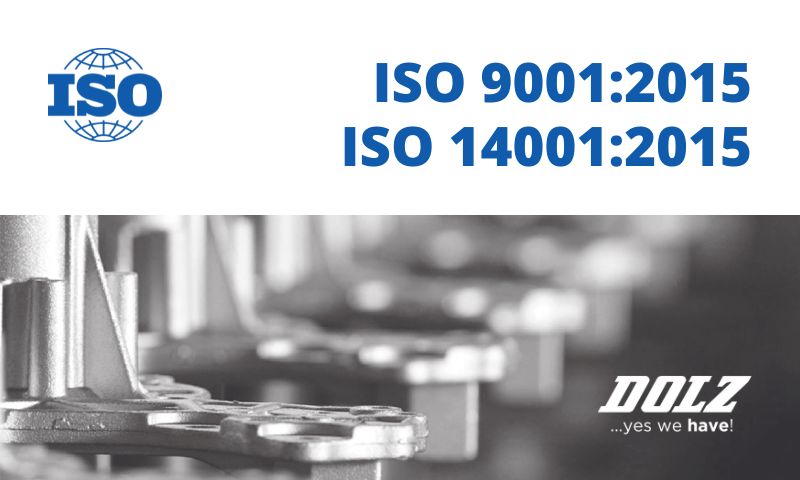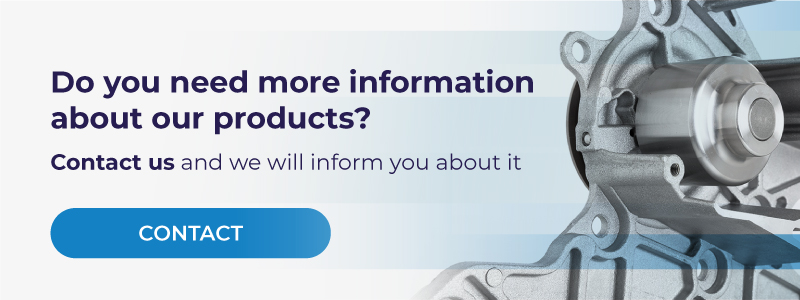When it comes to choosing a reliable supplier and business partner, companies look for reassurance. Compliance with ISO quality standards such as ISO 9001:2015 and ISO 14001:2015, provides objective proof that companies are taking the right steps towards ensuring quality in their products, as well as making a commitment towards sustainability.
Learn about ISO 9001:2015 and ISO 14001:2015 standards and why compliance with them helps companies improve their internacional performance as well as obtain a solid base for sustainable growth.
Everything you need to know about ISO 9001:2015 quality management systems
The ISO 9001:2015 standard is an international certificate that regulates Quality Management Systems (QMS) on a global scale.
ISO (International Standards Organization) is a global federation of national organizations that generates standards through the work of international expert committees. The ISO 9001 version 2015 represents an update from the original ISO 9000-2000 standard, which was revised and adjusted in 2012 and took its final shape in ISO 9001:2015.
The goal of this standard is to specify the requirements to develop a successful Quality Management System in companies.
As such, it allows companies to prove their products regularly meet client demands as well as legal and normative requirements. It’s also a tool for companies to explore new possibilities to satisfy client demands and improve their processes, as it generates a powerful analyzing instrument to observe the company’s systems from a holistic perspective.
The ISO 9001:2015 standard describes specific methods to examine a company’s processes. These methods are based on two key frames of reference:
- A process-oriented approach that incorporates the Plan-Do-Check-Act (PDCA) cycle. This perspective allows companies to allocate and manage resources in a wise and efficient manner, so that opportunities for improvement can be identified and applied.
- The inclusion of risk-based thinking. This approach to Quality Management Systems guides companies towards identifying potential risks in their activities and taking a preventive approach.
ISO 9001:2015 requirements
The ISO 9001:2015 standard is divided into ten sections, with section 4-10 outlining the requirements of the QMS. Some of the key requirements include:
- Establishing and maintaining a quality policy and objectives
- Conducting regular internal audits and management reviews
- Documenting and controlling processes and procedures
- Managing resources effectively, including personnel, infrastructure, and equipment
- Implementing corrective actions and continuously improving the QMS
By implementing an ISO 9001:2015 certified QMS, organizations can demonstrate their commitment to quality and increase customer confidence in their products and services. The certification process involves a third-party audit, which verifies that the organization’s QMS meets the requirements of the standard.
ISO 9001:2015 in the spare parts industry
In the aftermarket the choice of the right spare parts supplier remains a key strategic decision.
Compliance with the ISO 9001:2015 standard provides sound evidence that companies have done the work to:
- Regularly supply clients with high-quality products and services
- Move towards client-oriented models
- Tackle risks and opportunities consistently in order to improve their processes in a continuous manner
Related content: Endless quality. Discover the DOLZ Total Quality Control process
Differences between ISO 9001:2015 + ISO 14001:2015
Both of these ISO quality standards provide companies with tools to improve their performance and align with current market demands and needs.
Additionally, both are based on the Plan-Do-Check-Act (PDCA) approach, which generates an efficient framework for applying improvements.
However, they address different topics. On the one hand, it’s important to note that the ISO 9001:2015 standard doesn’t include specific references to improving companies’ environmental management.
As such, the ISO 14001:2015 standard works to complement 9001 ISO 2015: it provides a method for companies to achieve a balance between their economical goals and their environmental impact. In other words, ISO 14001 is geared towards achieving sustainability.
Regarding the spare parts industry in the automotive sector, the commitment in minimizing their environmental impact is growing, but still far from being widespread: only 42% of companies have made a carbon-neutral commitment, according to a report by PwC.
In such a context, suppliers that comply with ISO 14001:2015 provide a competitive advantage to their clients, helping them move towards their own environmental goals.
You may like: Dolz water pumps: a brief history throughout the years
Obtaining ISO 9001:2015 Certification
Becoming ISO 9001:2015 certified requires a systematic approach to quality management and a commitment to continuous improvement. Here are the steps you can take to obtain ISO 9001:2015 certification:
- Conduct a Gap Analysis: A gap analysis is an assessment of your organization’s current quality management system against the requirements of ISO 9001:2015. This analysis will help you identify the areas that need improvement to meet the standard.
- Develop an Implementation Plan: Once you have identified the gaps in your quality management system, you need to develop an implementation plan to address them. This plan should include a timeline, a budget, and the resources required to implement the necessary changes.
- Train Your Staff: ISO 9001:2015 requires that all employees who impact the quality management system be trained on the standard. This training should cover the requirements of the standard, how they apply to the employee’s job, and the importance of their role in maintaining the system.
- Implement the Changes: Once your implementation plan is in place and your staff has been trained, you can begin implementing the necessary changes to your quality management system.
- Conduct an Internal Audit: Before applying for ISO 9001:2015 certification, you should conduct an internal audit of your quality management system. This audit will help you identify any remaining gaps and ensure that your system is compliant with the standard.
- Apply for Certification: Once you have addressed any gaps identified during the internal audit, you can apply for ISO 9001:2015 certification. The certification process includes an external audit by a certification body to ensure that your quality management system meets the requirements of the standard.
By following these steps, your organization can obtain ISO 9001:2015 certification and demonstrate its commitment to quality management and continuous improvement.
The importance of working with a company that complies with ISO 9001:2015
As we’ve mentioned above, companies that comply with the ISO 9001:2015 standard generate a solid foundation to consistently provide high-quality products that align with their clients’ expectations.
Being aware of this, at Dolz we’ve worked to make our in-house production of auto parts not only a pioneering and totally automated system, but also fully ISO certified, thus confirming our commitment to become global reliable spare parts suppliers.
Considering we receive less than a 0.05% of guarantee rate in terms of returns, our dedication for quality is clear. Additionally, we’ve also worked to comply with ISO 14001:2015, moving our production towards more sustainable terms.
Want to learn more about ISO 9001:2015 and Dolz’s compliance in the vehicle spare parts sector? Get in touch with us


